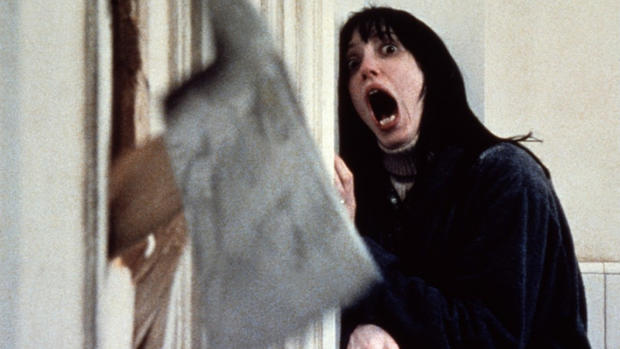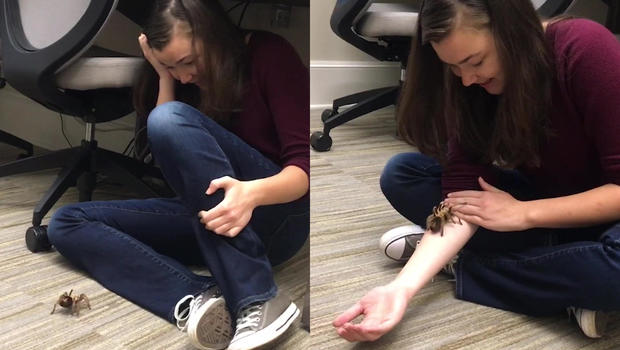Why nightmares might actually be a good thing
[ad_1]
As if the real world weren’t scary enough, we celebrate our fears every October. On Halloween the creepy costumes come out, and every year it seems Hollywood trots out a new movie with a familiar plot line.
“Halloween Kills” is the 12th (yes, 12th) installment in the series since 1978.
You probably remember your first Halloween movie, but did it give you bad dreams, or a nightmare?
There’s a difference.
“Most people think nightmares are just about fear, but they can really be any really negative emotion,’ said dream expert Leslie Ellis. “For a lot of people, it’s a really bad dream or really bad emotions, and they wake you up and they’re very vivid and easy to recall.”
In fact, nightmares, like some horror movies, can be unforgettable.
At the Hollywood Museum in Los Angeles, you can see props and costumes from Jason to Pennywise. And at least some of these films, like the ones with Freddy Krueger, were actually inspired by nightmares.
“If I have a nightmare, I’m so excited,” said horror director Eli Roth. “The first thing I wanna do is write it down, ’cause it’s like this gold mine of imagery that you’d never get otherwise.”
As a kid growing up in Boston, Roth was obsessed with horror films. His early drawings were filled with scary movie scenes – and he had himself sawed in half at his bar mitzvah, much to the dismay of his relatives.
“That was your bar mitzvah?” asked correspondent Tracy Smith.
“I was just a weird, weird kid!” Roth replied.
And that “weird kid” grew up to host “Eli Roth’s History of Horror” on AMC. It’s a show about the kind of movies that you’ll see in your sleep.
Roth said, “None of us like having nightmares, but they’re actually very healthy to have, because you’re acknowledging something you’re afraid of, and you’re letting out and expressing it. I just take my nightmares a step further, and then I write it down and I film it and I project it onto everybody else!”
“You share your nightmares with the world?” asked Smith.
“Yeah!”
Roth even played a character who tried to give Nazis nightmares: a Jewish American soldier with a baseball bat, in Quentin Tarantino’s “Inglourious Basterds.”
Of course, you don’t always need a bat to knock an audience out. Sometimes the image of pure evil is enough to keep people up at night – like “The Silence of the Lambs,” the only horror film ever to win a Best Picture Oscar.
So, how many of us have been told you shouldn’t watch horror movies because they’ll give you nightmares? It turns out nightmares might actually be a good thing. Some experts say there’s really no such thing as a bad dream.
“Well, that’s kind of a controversial statement,” said Ellis, “but yes, I believe that all dreams are trying to help us sort through our emotional lives. Sometimes they represent physical illness that, you know, the dreaming sort of picks up on early warning signs.”
In other words, our brains help sort out the days’ events and anxieties – big and small – while we’re asleep. When our dreams scare us, we like to figure out what they mean. But it’s not that simple.
Psychology professor Jon Abramowitz said, “Really, we don’t put a lot of stock in, like, trying to understand the meaning of nightmares or anything like that. That’s also kind of older Freudian psychology which we don’t – it’s not very scientific.”
Smith asked, “All this dream interpretation that we’ve done – ‘Okay, if my teeth are falling out, what does it mean?’ – you guys don’t really rely on that?”
“We don’t! So, 100 years ago they did, but there’s no scientific evidence to suggest that any of that stuff is valid. So we really don’t worry about that any more.”
Abramowitz says dreams shouldn’t be taken literally: what matters more is what’s causing them in the first place. He runs an anxiety research clinic at the University of North Carolina, Chapel Hill, and says that we can tame our worst fears (in nightmares or in real life) by confronting them.
One visitor to the clinic, Leah, wanted to get over her deathly fear of spiders. She allowed her session with a tarantula to be recorded.
“Oh God, she’s moving toward me!”
At first, Leah tried to stay as far away from it as possible, even by crawling under the desk. When asked to describe her anxiety level from zero to 10, she replied, “I don’t know, I can’t think!”
But after about three hours, she realized that the spider wasn’t going to bite her, and she was able to manage her anxiety enough to let the spider take a walk on her arm.
Anxiety and Stress Lab, University of North Carolina, Chapel Hill
Smith asked, “So, in the same way that you encourage people with anxiety to lean into their fears, if we’re concerned about our nightmares, we should lean into them?”
“We should,” Abramowitz replied. “And effective treatment involves having the person recount the nightmares writing them out engaging with them in a healthy way, rather than trying to push them away. Lots of research suggests that when we try to push away our private experiences – thoughts, emotions – that just makes them worse, because then we become preoccupied with trying to push them away. And those experiences end up just kind of pushing us around, bossing us around more than they need to.”
So, embrace your nightmares? Absolutely, says director Eli Roth, who agrees there’s something beneficial in facing our fears, and nightmares, head-on: “I think there’s a human need to confront our fears so that we realize that it’s not nearly as bad as we thought, and that it’s stopping us from being our highest selves.”
And the takeaway here may be as cliché as the car that won’t start in a horror movie: Follow your dreams (even the ones that scare you).
For more info:
Story produced by John D’Amelio. Editor: Mike Levine.
See also:
Download our Free App
For Breaking News & Analysis Download the Free CBS News app
[ad_2]
Source link












